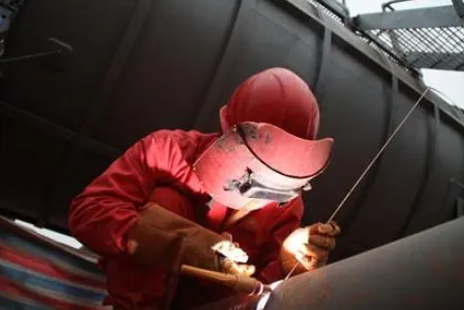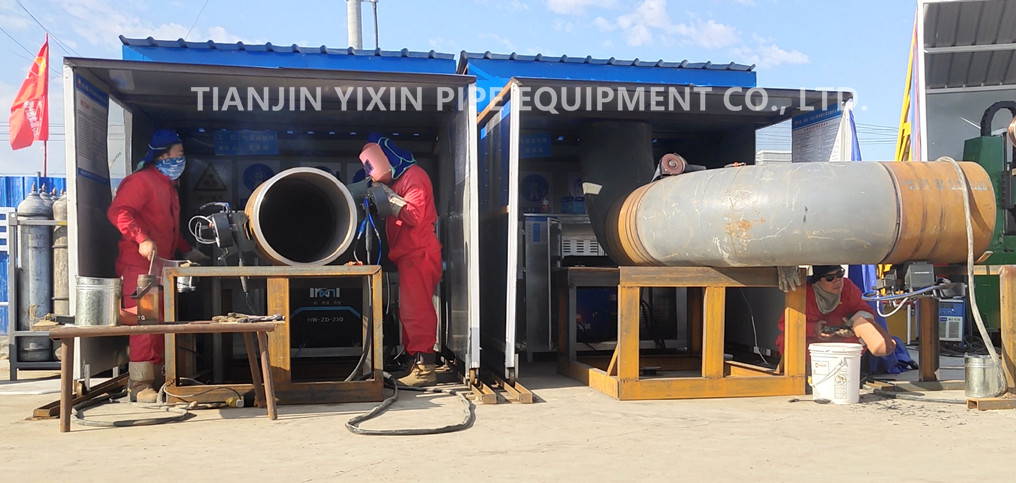Welding Methods Collection
1. Manual arc welding
Manual arc welding is the earliest developed and still the most widely used welding method among various arc welding methods. It uses a welding rod coated with paint as the electrode and filler metal, and the arc burns between the end of the welding rod and the surface of the workpiece to be welded.
Under the action of the arc heat, the coating can generate gas to protect the arc on the one hand, and on the other hand, it can generate slag covering the surface of the molten pool to prevent the interaction of the molten metal with the surrounding gas. The more important role of slag is to produce physical and chemical reactions with molten metal or add alloying elements to improve the properties of weld metal.
The manual arc welding equipment is simple, portable and flexible in operation. It can be used for welding short seams in maintenance and assembly, especially for welding hard-to-reach parts. Manual arc welding with corresponding electrodes can be applied to most industrial carbon steel, stainless steel, cast iron, copper, aluminum, nickel and their alloy.
2. Tungsten gas shielded arc welding
This is a non-melting electrode gas shielded arc welding, which uses the arc between the tungsten electrode and the workpiece to melt the metal to form a weld. The tungsten electrode does not melt during the welding process and only acts as an electrode. At the same time, argon or helium gas is fed into the nozzle of the welding torch for protection. It is also possible to additionally add metal as required. (Commonly known as TIG welding in the world).
Tungsten gas shielded arc welding can well control the heat input, so it is an excellent method for connecting sheet metal and bottom welding. This method can be used for the connection of almost all metals, especially suitable for welding aluminum, magnesium and other metals that can form refractory oxides and active metals such as titanium and zirconium. The weld quality of this welding method is high, but compared with other arc welding, its welding speed is slower.
3. Molten electrode gas shielded arc welding
This welding method uses the arc burning between the continuously fed welding wire and the workpiece as the heat source, and the gas shielded arc sprayed from the torch nozzle for welding.
The shielding gases commonly used in MIG/MAG welding are: argon, helium, CO2 or a mixture of these gases. When argon or helium is used as the shielding gas, it is called MIG welding (referred to as MIG welding in the world).
When a mixture of inert gas and oxidizing gas (O2, CO2) is used as a shielding gas, or when CO2 gas or a CO2+O2 mixture is used as a shielding gas, or when a CO2 gas or CO2+O2 mixture is used as a shielding gas, it is collectively referred to as melting pole activity Gas shielded arc welding (referred to as MAG welding in the world).
The main advantage of MIG welding is that it can be easily welded in various positions, and it also has the advantages of faster welding speed and high deposition rate.
MIG/MAG welding can be applied to most major metals, including carbon steel and alloy steel. MIG welding is suitable for stainless steel, aluminum, magnesium, copper, titanium, zirconium and nickel alloys. This welding method can also be used for arc spot welding.
Tianjin Yixin is a manufacturer specializing in automatic welding equipment. It adopts FCAW/GMAW PROCESS. The pipeline all-position automatic welding machine can be used for various ms, cs, ss and other on-site pipeline welding, and has won unanimous praise from customers. If there is any welding consultation, please contact us directly for more details.
Post time: Nov-09-2021



